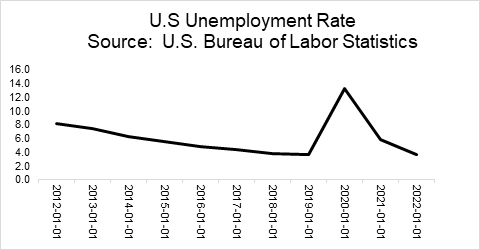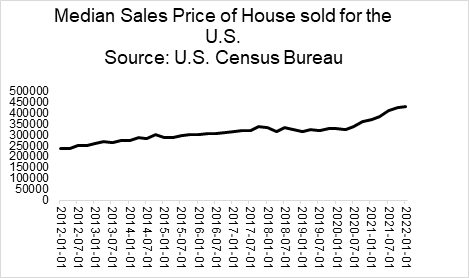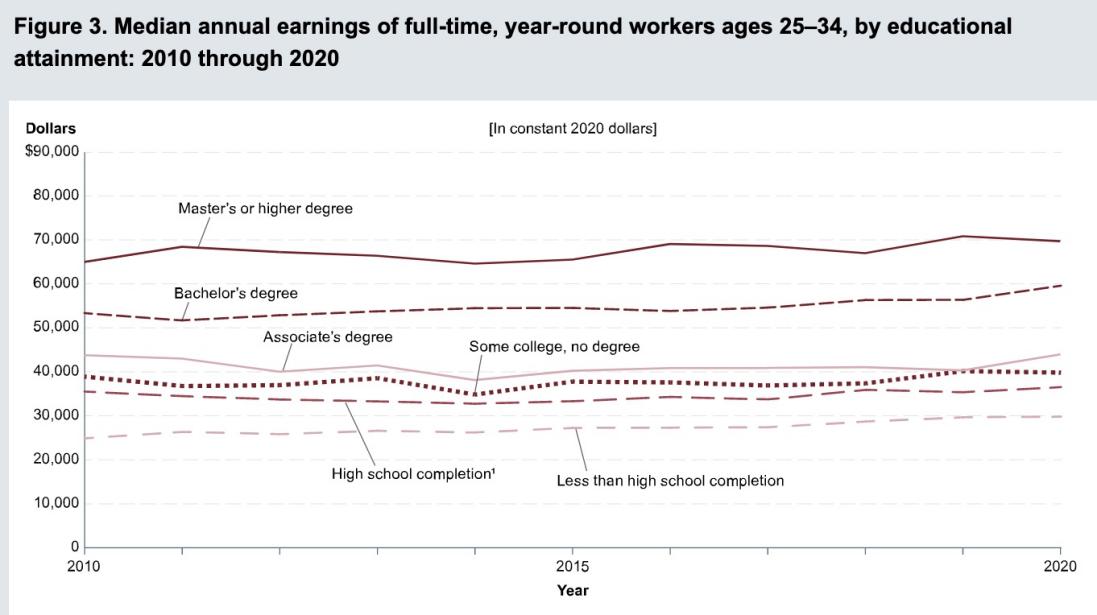1. Introduction
In general, housing prices are a very serious issue in the United States. Since 2020, the pandemic has had a huge impact on the United States in terms of real estate [1]. There are already many homeless people in the United States, and now the real estate market is constantly changing. The "appreciation" of real estate has brought trouble to more people. Part of the reason for the appreciation of real estate is because of the speculation of capitalists, who understand that in such extraordinary times, houses are in demand for many people, because many people in the United States are living in Houses bought only by bank loans, coupled with the fact that many people's wages have not changed in recent decades, while prices and housing prices have been rising, and bank interest rates have also increased, resulting in many people being taken away by banks. The important thing is that the unemployment rate in the United States is also rising because of the epidemic, which also makes many people homeless, unable to pay their mortgage, and losing their place to live. However, it can be increased by increasing the supply, raising the mortgage rate, and building more affordable rooms to solve this problem.
2. Literature Review
Real estate is a relatively interesting project. It can be said that a long time ago, not too many people cared about real estate. That is, in the past ten years, with the development of technology and the times, real estate has become better and better. Affected by the epidemic, the house itself is a demand, and this has further led to people's need for a livable and good environment, so that they will not be affected by the pandemic. However, the rise in housing prices has brought a lot to young people. pressure.
For instance, Theresa Kuchler, Monika Piazzesi and Johannes Stroebel also discussed this question [2]. They found that observed house price changes in a person's social network and current homeownership rates have a strong impact on housing market expectations. Likewise, experienced house price volatility can influence the uncertainty of expectations.
Most importantly, the trend of rising wages for young people contrasts sharply with the trend of rising house prices. Graduate wages have barely changed in the past decade, while house prices have nearly doubled. This brings This has brought huge pressure on young people, and this situation makes them need to spend twice as long to buy a house than before.
Other people's research makes my argument stand. The rise of real estate puts a lot of pressure on young people. But there are also loopholes. The graduate salary I am talking about is the average salary. For example, if two people graduate with a master's degree, their average annual income is $70,000, but it's possible that one of them can make $90,000 a year and the other can only make $50,000. Comparing with the house price, the first person can buy it in 5 years One house, but the second one takes more time.
3. Young People and Real Estate
Real estate is not a speculative product in the first place. You allow it to be an investment product, but it is definitely not a speculative product. In the United States, due to the spread of the pandemic, various industries have been affected to a certain extent. Real estate will be affected the most in 2020 [3]. Figure 1 At the beginning, the entire real estate in the United States was rising rapidly. This also led to many people starting to use the purchase of real estate to hype. Because the epidemic led to an increase in demand, but the supply did not change, so many people deliberately raised the price of real estate. The price is that many people can't afford the money or go to the bank to pay more interest than before to buy it. And the people who are most affected by this are young people. First, the appreciation of real estate has caused young people to struggle more It takes a long time to buy a house. Second, the rise in housing prices has also led to an increase in the rent required for renting a house.

Figure 1: Diagram showing the U.S. unemployment rate during 2012 to 2022, which we can see at 2022 reached the highest point.
In this context, from a macro level, the price of the house bought a few years ago has doubled is not a good thing. Because society needs to be sustainable, this brings huge risks to economic development. High housing prices cause young people to do more work ad more time to earn enough money to buy a house. “At the individual level, roughly 65% of occupied housing units are owner-occupied, homes are often a substantial source of household wealth in the United States, and housing construction provides widespread employment [4].” Huge housing prices have made many people unable to afford houses, coupled with population growth and rising prices, which have indirectly affected them.

Figure 2: Diagram showing the Median sales price of house sold for the U.S.

Figure 3: Diagram showing the average earnings from 2010 to 2020, ages 25-34.
According to the comparison between Figure 2 and Figure 3, it can be found that most American people now need to work for at least 10 years to be able to buy a house [5-6]. Take master graduates as an example. In the past ten years, their average salary has been around 70,000 US dollars. However, the housing price has changed from more than 200,000 at the beginning to more than 400,000 US dollars now. The rise has put a lot of pressure on young people. Because their wages have not risen, and the house price has doubled, that is to say, it may have taken them four years to buy a house before, but now it takes eight years, not including the possibility that house prices will continue to rise. “Statistics show that the average starting salary for college graduates is $55,260 (USA Today, 2022) [7].” Rising house prices are not friendly to young people. The income and assets of young people are not enough buying a house, which also makes young people unable to survive in the city. At the same time, the rise in house prices also affects the price of renting a house. This also has further affected more young people. Many young people are living in rented houses, and the rise in rents is due to the impact of rising house prices. “At the median owner-occupancy rate zip code, we find that a 1% increase in Airbnb listings leads to a 0.018% increase in rent and a 0.026% increase in house prices [8].” We understand that house prices and rents are directly proportional, and the rents will also rise if the house prices rise. Because the house prices have risen, those landlords think that they need to pay more to live in their houses, and the increase in utility bills, and property fees, also make rent more expensive.
Rising housing prices have also contributed to homelessness among young people. “On a single night in 2020, 34,210 unaccompanied youth were counted as homeless. Of those, 90 percent were between the ages of 18 to 24. The remaining 10 percent (or 3,389 unaccompanied children) were under the age of 18 [9].” From this, we can see that many young people in the United States are already homeless. There are many reasons, family reasons, business bankruptcy. But the most important thing is the rise in housing prices. For example, they go to work elsewhere, but because of housing prices and rising rents, they can't afford to pay. “The homeownership rate for young adults is at a multi-decade low, and about a quarter of renters send more than half their income to the landlord (New York Time, 2020) [10].” For those who have jobs but pay little, wages simply don't match the cost of housing. Wages for most American workers have barely grown over the past few decades. Too little income, combined with a dwindling supply of affordable housing, has left many homeless “When housing prices force typical households to spend more than 32 percent of their income on rent, those communities begin to experience rapid increases in homelessness (National Alliance to end homelessness, 2018) [11].”
4. Solution
One of the solutions is to increase the mortgage rate. This is done to control the number of people buying houses. Through the price elasticity of demand formula, we know that if the bank lowers the interest rate, then the demand will increase. For example, before the bank, the interest rate is 4%, and now it has been reduced by 1%. Many families who could not afford it before can now afford it, which means that more people can use bank loans to buy houses. But it will also lead to those Capitalists will buy more real estate.
Another solution is to increase the supply of houses. Through the supply and demand curve, we can know that when the supply increases, the price will decrease. The premise is that the demand remains unchanged. To achieve this, we can look at it from different angles. First, increase the number of raw material factories. Second, develop more land for building houses. Similarly, this can also lead to capitalists being unable to control the real estate market.
The third solution is to build more affordable housing [12]. This kind of house can be provided to those poor people who don't need to pay too much rent so that their lives can be improved. For example, the cost to rent or purchase housing has become less affordable for millions of Californians. Affordable housing is vital because this help people get rid of diseases because they can have a normal living environment without paying too much.
5. Conclusion
Overall, most of the reasons for the high housing prices are caused by the pandemic and the speculation of capitalists. This has further contributed to increased stress among teens. They are spending more time than ever buying a property of their own. Excessive housing prices make teenagers in the United States have to work harder. To this end, they sacrifice their health and time, resulting in many people getting sick or broken families. At the same time, housing prices also bring less money to the older generation. Affects, like their children are having a hard time, they need to give them money or the children need to live with them until they have a house.
References
[1]. Congressional research service,2021. p. 1-3 <https://sgp.fas.org/crs/misc/IF11327.pdf>
[2]. https://nces.ed.gov/programs/coe/indicator/cba/annual-earnings
[3]. U.S Bureau of Labor Statistic, 2022, p.1<https://fred.stlouisfed.org/series/UNRATE# >
[4]. Consumer Financial Protection Bureau, 2021, p.3 <https://files.consumerfinance.gov/f/documents/cfpb_Housing_insecurity_and_the_COVID-19_pandemic.pdf>
[5]. The U.S. Department of Housing and Urban Development, 2022, Meghan Henry, Tanya de Sousa, Colette Tano, Nathaniel Dick, Rhaia Hull, Meghan Shea, Tori Morris, and Sean Morris, Abt Associates, p.4<https://www.huduser.gov/portal/sites/default/files/pdf/2021-AHAR-Part-1.pdf>
[6]. Wyatte Grantham-philips, 2022, College students expect to make $103,880 after graduation – almost twice the reality<https://www.usatoday.com/story/money/personalfinance/2022/05/05/college-grads- salary-expectations/9656696002/>
[7]. Kyle Barron, Edward Kung, Davide Proserpio. 2019. The Effect of Home-Sharing on House Prices and Rents: Evidence from Airbnb. P.1-2<https://marketing.wharton.upenn.edu/wp-content/uploads/2019/08/09.05.2019-Proserpio-Davide-Paper.pdf>
[8]. Homelessness in America / Who Experiences Homelessness? / Youth and Young Adults,2020<https://endhomelessness.org/homelessness-in-america/who-experiences-homelessness/youth/>
[9]. Conor Dougherty,2020. New York Times, Build Build Build Build Build Build Build Build Build Build Build Build Build Build<https://www.nytimes.com/2020/02/13/business/economy/housing-crisis-conor-dougherty-golden-gates.html>
[10]. Joy Moses, 2018. New Research Quantifies the Link Between Housing Affordability and Homelessnes <https://endhomelessness.org/blog/new-research-quantifies-link-housing-affordability-homelessness/ >
[11]. https://www.zhihu.com/question/27969524
[12]. https://housingforwardva.org/toolkits/affordable-housing-101/why-is-affordable-housing-important-is-rental-or-homeownership-more-important/
[13]. Theresa Kuchler,Monika Piazzesi and Johannes Stroebel, 2022. Housing Market Expectations <https://stanford.edu/~piazzesi/Housing_Market_Expectations.pdf
Cite this article
Zhang,B. (2023). The Impact of Rising U.S. Real Estate Prices on Young Americans. Advances in Economics, Management and Political Sciences,8,43-47.
Data availability
The datasets used and/or analyzed during the current study will be available from the authors upon reasonable request.
Disclaimer/Publisher's Note
The statements, opinions and data contained in all publications are solely those of the individual author(s) and contributor(s) and not of EWA Publishing and/or the editor(s). EWA Publishing and/or the editor(s) disclaim responsibility for any injury to people or property resulting from any ideas, methods, instructions or products referred to in the content.
About volume
Volume title: Proceedings of the 2nd International Conference on Business and Policy Studies
© 2024 by the author(s). Licensee EWA Publishing, Oxford, UK. This article is an open access article distributed under the terms and
conditions of the Creative Commons Attribution (CC BY) license. Authors who
publish this series agree to the following terms:
1. Authors retain copyright and grant the series right of first publication with the work simultaneously licensed under a Creative Commons
Attribution License that allows others to share the work with an acknowledgment of the work's authorship and initial publication in this
series.
2. Authors are able to enter into separate, additional contractual arrangements for the non-exclusive distribution of the series's published
version of the work (e.g., post it to an institutional repository or publish it in a book), with an acknowledgment of its initial
publication in this series.
3. Authors are permitted and encouraged to post their work online (e.g., in institutional repositories or on their website) prior to and
during the submission process, as it can lead to productive exchanges, as well as earlier and greater citation of published work (See
Open access policy for details).
References
[1]. Congressional research service,2021. p. 1-3 <https://sgp.fas.org/crs/misc/IF11327.pdf>
[2]. https://nces.ed.gov/programs/coe/indicator/cba/annual-earnings
[3]. U.S Bureau of Labor Statistic, 2022, p.1<https://fred.stlouisfed.org/series/UNRATE# >
[4]. Consumer Financial Protection Bureau, 2021, p.3 <https://files.consumerfinance.gov/f/documents/cfpb_Housing_insecurity_and_the_COVID-19_pandemic.pdf>
[5]. The U.S. Department of Housing and Urban Development, 2022, Meghan Henry, Tanya de Sousa, Colette Tano, Nathaniel Dick, Rhaia Hull, Meghan Shea, Tori Morris, and Sean Morris, Abt Associates, p.4<https://www.huduser.gov/portal/sites/default/files/pdf/2021-AHAR-Part-1.pdf>
[6]. Wyatte Grantham-philips, 2022, College students expect to make $103,880 after graduation – almost twice the reality<https://www.usatoday.com/story/money/personalfinance/2022/05/05/college-grads- salary-expectations/9656696002/>
[7]. Kyle Barron, Edward Kung, Davide Proserpio. 2019. The Effect of Home-Sharing on House Prices and Rents: Evidence from Airbnb. P.1-2<https://marketing.wharton.upenn.edu/wp-content/uploads/2019/08/09.05.2019-Proserpio-Davide-Paper.pdf>
[8]. Homelessness in America / Who Experiences Homelessness? / Youth and Young Adults,2020<https://endhomelessness.org/homelessness-in-america/who-experiences-homelessness/youth/>
[9]. Conor Dougherty,2020. New York Times, Build Build Build Build Build Build Build Build Build Build Build Build Build Build<https://www.nytimes.com/2020/02/13/business/economy/housing-crisis-conor-dougherty-golden-gates.html>
[10]. Joy Moses, 2018. New Research Quantifies the Link Between Housing Affordability and Homelessnes <https://endhomelessness.org/blog/new-research-quantifies-link-housing-affordability-homelessness/ >
[11]. https://www.zhihu.com/question/27969524
[12]. https://housingforwardva.org/toolkits/affordable-housing-101/why-is-affordable-housing-important-is-rental-or-homeownership-more-important/
[13]. Theresa Kuchler,Monika Piazzesi and Johannes Stroebel, 2022. Housing Market Expectations <https://stanford.edu/~piazzesi/Housing_Market_Expectations.pdf









